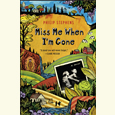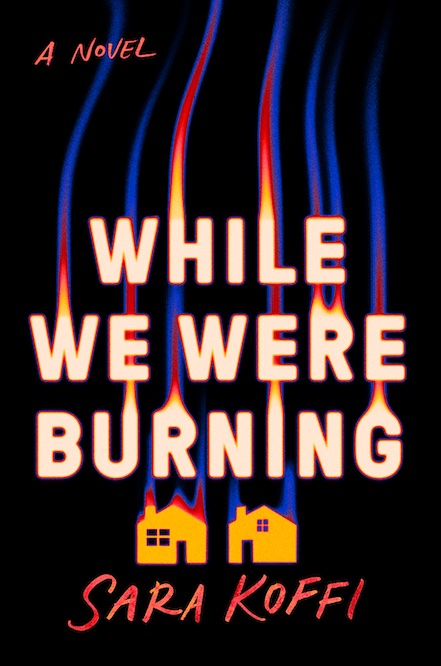Wordsworth Redux
With Bloodroot, debut novelist Amy Greene brings Romanticism into the 21st century
It’s no slam on the debut novelists of the world to note that a first book—especially the first book by a young woman of poetic sensibilities—tends to be a small volume, inward focused, both unprepossessing and terribly self-scrutinizing. Literature will always need clever coming-of-age tales in which bewildered and misunderstood protagonists make their painful and heart-stirring way toward enlightenment. If we are to raise up serious readers in each new generation, we must give them a way to read about themselves.
 Amy Greene has not written that kind of debut novel. Instead, the 34-year-old Morristown native, who married her high-school sweetheart at 18 and had her first baby at 20, has turned out nothing less than an epic—a story of madness and magic that spans four generations, an emotionally tangled tale that requires six disparate voices to tell and offers no easy resolutions to the conflicts of the heart. To its everlasting credit, Bloodroot is a big, ambitious book that will never be taught in a ninth-grade English class.
Amy Greene has not written that kind of debut novel. Instead, the 34-year-old Morristown native, who married her high-school sweetheart at 18 and had her first baby at 20, has turned out nothing less than an epic—a story of madness and magic that spans four generations, an emotionally tangled tale that requires six disparate voices to tell and offers no easy resolutions to the conflicts of the heart. To its everlasting credit, Bloodroot is a big, ambitious book that will never be taught in a ninth-grade English class.
Myra Lamb, a barefooted orphan of “haint blue” eyes, is the heart of the novel. Raised by her grandmother on Bloodroot Mountain, Myra is the vital center from whom the multigenerational narrative constantly loops and returns. Doug Cotter, a neighbor boy who loves Myra and is undone by her failure to love him back, tells part of the story. Byrdie Lamb, Myra’s grandmother, voices another. Myra’s twin children, Laura and Johnny Odom, pick up where Byrdie leaves off. Even John Odom, Myra’s abusive husband and the man who may or may not be the twins’ father, chimes in. By the middle of the novel, when Myra finally takes up the story in her own voice, she is both larger than life—the wild child of Wordsworthian nature—and the all-too-real victim of a tragically bad choice in impossibly limiting circumstances.
This is not a novel to read for its plot. With so many different voices telling the story, skipping forward and circling back in time—sometimes covering exactly the same ground from a different angle—it can be hard to discern a story at all. The frequent shifts in narration from speaker to speaker, often with only a page or two between voices, are dislocating at first, but Bloodroot rewards patience. The plot poses a question: “What really happened to Myra Lamb?” The answer, though more or less fixed, is so nuanced that it requires many perspectives to reveal.
Myra’s life is the culmination, for both good and ill, of the folly and the power of the “granny women” in her family line. Byrdie’s people are healers and diviners; some of the mountain people call them witches, for they know the uses of herbs—like the bloodroot flower, which can be both a poison and a cure—and share the mountain as the spiritual equals of animals and birds. Such powers can skip a generation or two: “It’s odd how the touch moves in a family,” Byrdie says. “You can never tell who’ll turn up with it.” But it’s clear in Myra from an early age. Nevertheless, as Myra learns when she marries John Odom and moves to a shadeless shack in a dirt yard beside the train tracks, it’s one thing for a girl to have the touch on Bloodroot Mountain, and another thing entirely to pack it up and carry it off to town. “Haint blue,” the color of Myra’s eyes “is a special color that wards off evil spirits and curses,” according to Byrdie, but it has no power against love for an evil man.
The problem with this kind of summary—even without references to chicken hearts and severed fingers and spirit-traveling and water witches—is that it seriously misrepresents the deft touch and light hand with which Greene actually conveys such mountain lore. The novel is charged with an atmosphere of magic and mystery, but it is simultaneously so firmly grounded in the soil and stones of Bloodroot Mountain that the supernatural operates subtly, almost unconsciously. As with a wandering spirit that might be only a mountain vapor, you’re never entirely sure it’s there at all.
“The whole mountain belonged to us and we knew its terrain like our own bodies, every scar and cleft and fold.”
What’s much clearer is the authenticity of the voices here—all speaking the same Appalachian dialect and yet identifiably distinct from each other, a true feat of ventriloquism for a first-time novelist—and the profound love of the land that pervades the narrative. Doug Cotter recalls his childhood visits to Piney Grove and Slop Creek and Millertown, twelve miles down winding roads from his home, but “the minute I got back home, with none of those places visible through the trees, I forgot about them. There was only Bloodroot Mountain and I didn’t mind because Myra was up there with me. The whole mountain belonged to us and we knew its terrain like our own bodies, every scar and cleft and fold.” This is Romanticism with a capital R—with its belief in the wisdom of children, its celebration of the natural world, and its shroud of mist and mystery, Bloodroot is a direct descendant of Lyrical Ballads.
But it’s more than that, too. If events were confined to Bloodroot Mountain, the book would get awfully cloying awfully fast. This is a novel, of course, and not a work of sociology, but it captures profoundly both the vanishing mountain world with its “bare trees and brown water splitting the fields in two, fencerows like twigs strung together with thread,” and the poverty and despair of Millertown. Bloodroot has as much to say about the human destruction caused by the crumbling social institutions of the impoverished mountain South as about the bulldozers bringing “half-built houses peeking out of the trees with satellite dishes on their roofs.”
Bloodroot is a beautiful novel, but it isn’t a pretty one. When Myra Lamb finally goes in search of news about her long-dead parents, she tells a newfound aunt, “All I hear are the good stories. I want to hear all of the stories. Good and bad.” And that’s what Amy Greene delivers, too.
To read an interview with Amy Greene, click here.
Amy Greene will read from and sign copies of Bloodroot at Davis-Kidd Booksellers on February 8 at 7 p.m., and at Davis-Kidd Booksellers in Memphis on February 9 at 6 p.m.


